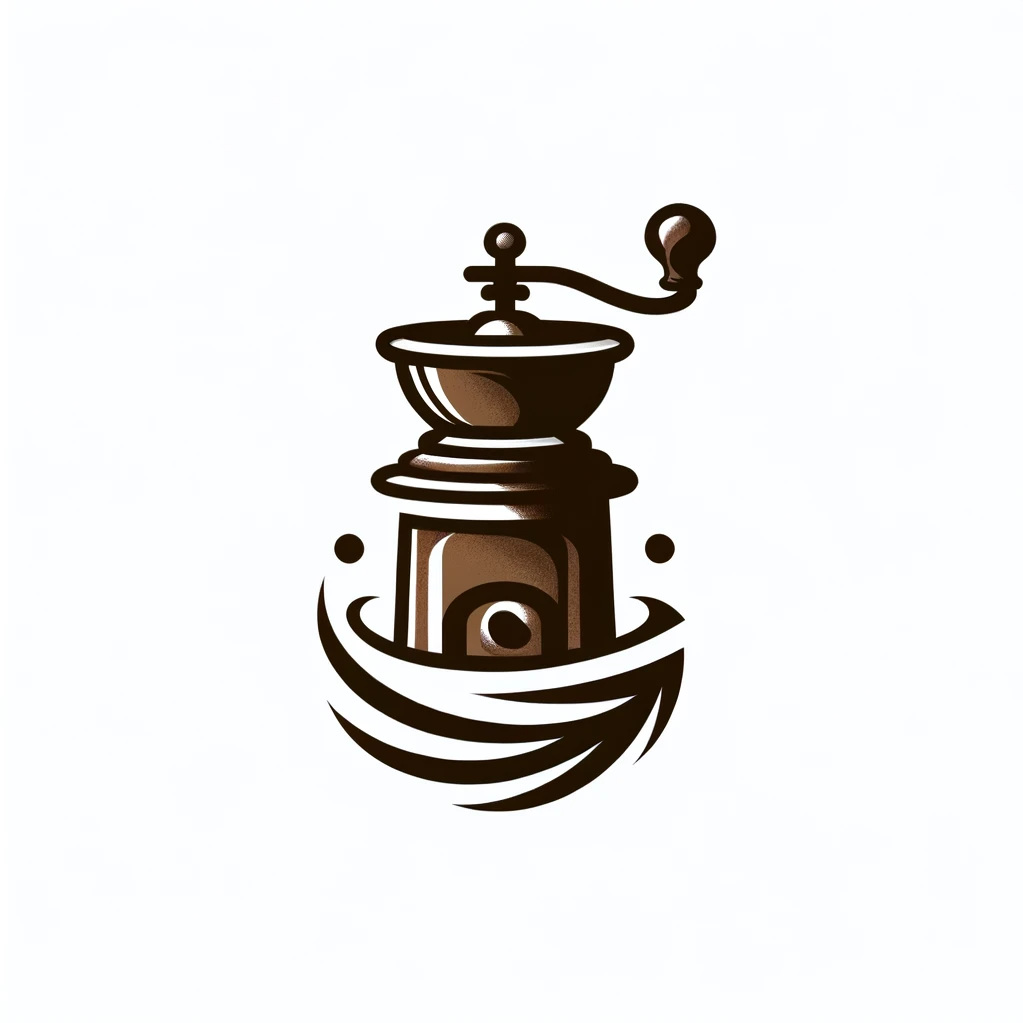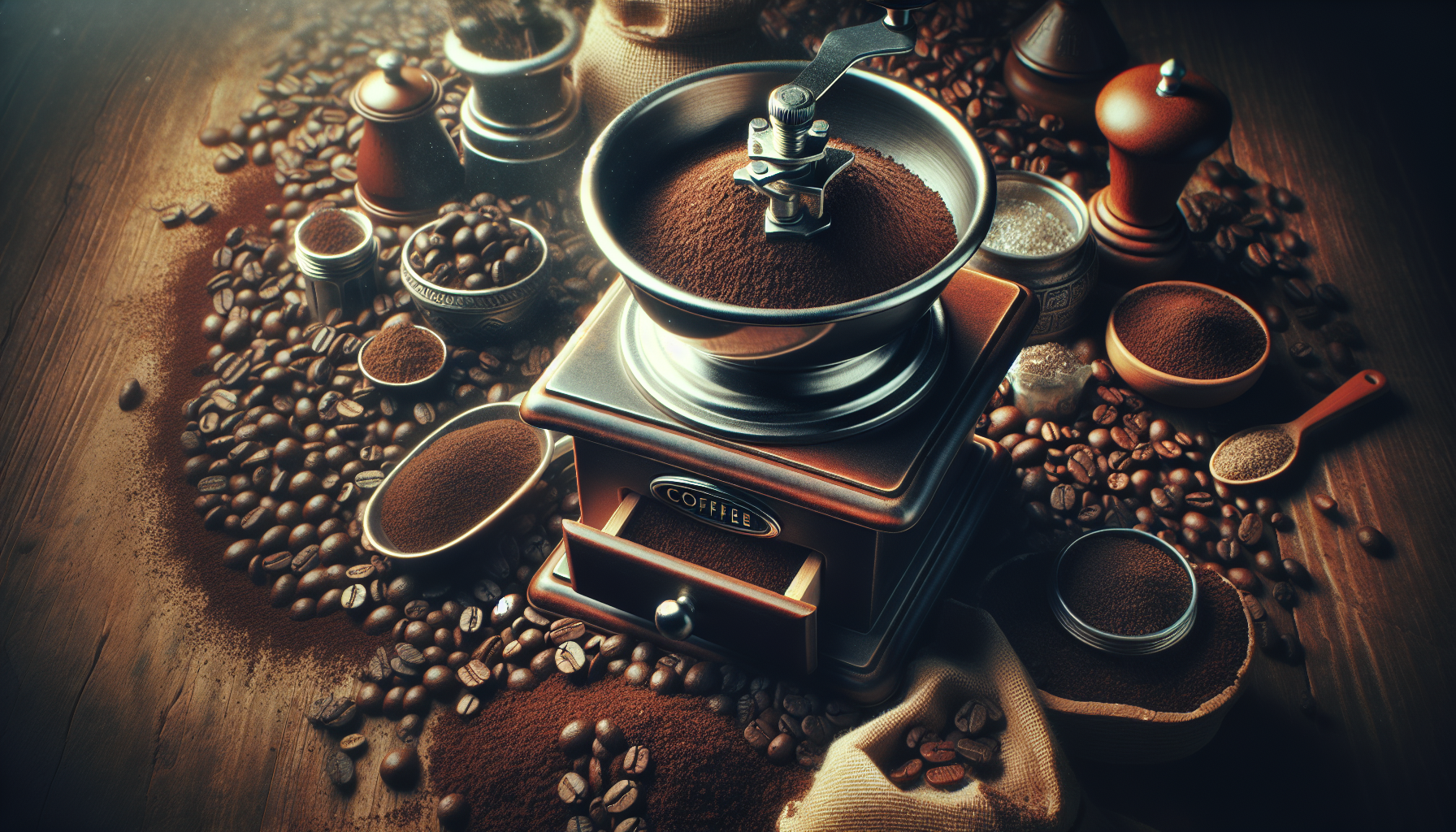Finding the perfect grind for your coffee can be a daunting task, especially if you’re new to the world of brewing. With so many options available, from fine to coarse, it’s easy to feel overwhelmed. But fear not, dear coffee lover, because in this article, we will guide you through the process of choosing the right grind for your preferred brewing method. By the end, you’ll have the confidence to grind your coffee beans just the way you like it, and savor every sip of that perfectly brewed cup of joe.
CHECK OUT COFFEE GRINDERS ON AMAZON
Factors to consider when choosing a coffee grind
When it comes to brewing coffee, the grind size plays a crucial role in determining the overall flavor and quality of your cup. There are several factors to consider when choosing a coffee grind, including the type of beans, brewing method, personal preference, and the equipment you have available.
Bean type
The type of beans you are using will greatly influence the grind size. Different types of coffee beans have varying densities and flavors, which means they require different grind sizes to extract the optimal flavor. For example, if you are using Arabica beans, which are known for their delicate flavors, a finer grind size may be necessary to fully extract the nuances of the beans. On the other hand, Robusta beans, which are stronger and more robust in flavor, may be better suited for a coarser grind size.
Brewing method
The brewing method you choose will also determine the ideal grind size for your coffee. Different brewing methods require different levels of extraction, and the grind size plays a key role in controlling this process. For example, a French press requires a coarse grind size to prevent over-extraction and produce a rich and full-bodied cup of coffee. On the other hand, an espresso machine requires a very fine grind size to ensure proper extraction and create a concentrated and intense shot of espresso.
Personal preference
When it comes down to it, personal preference is perhaps the most important factor in choosing a coffee grind. Everyone has their own unique taste preferences, whether it’s a preference for a bold and strong coffee or a smoother and more mellow cup. Experimenting with different grind sizes can help you discover the perfect balance that suits your taste buds. Don’t be afraid to try different grind sizes and adjust accordingly until you find your ideal cup of coffee.
Brewing equipment
Lastly, the brewing equipment you have available will also impact the grind size you should use. Different brewing equipment requires specific grind sizes to achieve the best results. For example, if you are using a pour-over method, a medium-coarse grind is typically recommended to ensure an even extraction. On the other hand, if you are using a Moka pot, a medium-fine grind will work better to achieve the desired intensity and flavor.
CHECK OUT COFFEE GRINDERS ON AMAZON
Different Types of Coffee Grinds
Now that we have discussed the factors to consider when choosing a coffee grind, let’s dive into the different types of coffee grinds and their characteristics. Here are the main categories of coffee grinds:
Extra Coarse Grind
An extra coarse grind is characterized by large, chunky coffee particles. This grind size is typically used for cold brew methods or for brewing coffee in a French press. The large particles prevent over-extraction, resulting in a smoother and less bitter cup of coffee.
Coarse Grind
A coarse grind consists of slightly smaller particles compared to the extra coarse grind. This grind size is commonly used in a French press brewing method, as it allows for optimal extraction while preventing the fine particles from passing through the filter and into the cup. Coarse grinds produce a rich and full-bodied cup of coffee.
Medium-Coarse Grind
A medium-coarse grind is a versatile grind size that works well in various brewing methods. It is slightly finer than a coarse grind and is commonly used in pour-over methods. The medium-coarse grind allows for a balanced extraction, resulting in a clean and flavorful cup of coffee.
Medium Grind
A medium grind size is often used in drip brewing methods and is suitable for most coffee makers. It has a texture similar to sand and provides a balance between extraction and flavor. This grind size is commonly used in automatic drip coffee makers.
Medium-Fine Grind
A medium-fine grind is finer than a medium grind and is commonly used in brewing methods such as pour-over and Aeropress. This grind size allows for a faster extraction, resulting in a brighter and more vibrant cup of coffee.
Fine Grind
A fine grind consists of small particles that are similar to granulated sugar. This grind size is commonly used in espresso machines, where a quick and concentrated extraction is desired. A fine grind allows for optimal extraction of flavors and creates a rich and thick crema on top of the espresso shot.
Extra Fine Grind
An extra fine grind is the finest grind size available and is typically used in Turkish coffee brewing methods. This grind size produces a very strong and concentrated cup of coffee, with a thick and sludgy texture.
Using the Right Grind for Different Brewing Methods
Now that we have explored the different types of coffee grinds, let’s discuss how to use the right grind size for different brewing methods. Each brewing method requires a specific grind size to achieve the best results:
French Press
For a French press, a coarse grind is recommended. The large particles allow for a longer steeping time without over-extraction, resulting in a full-bodied and flavorful cup of coffee. To use a French press, simply add coarsely ground coffee to the press, pour hot water over it, and let it steep for a few minutes. Press the plunger down slowly and enjoy your freshly brewed coffee.
Pour Over
When using a pour-over brewing method, a medium-coarse grind works best. This grind size allows for a controlled extraction, ensuring an even and balanced cup of coffee. To make a pour-over coffee, place a filter in the dripper and add medium-coarse ground coffee. Slowly pour hot water over the coffee in a circular motion, allowing it to drip into the cup below. The result is a clean and flavorful cup of coffee.
Aeropress
For an Aeropress, a medium-fine grind is recommended. This grind size allows for a quicker extraction and produces a vibrant and intense cup of coffee. To use an Aeropress, place a filter in the device, add medium-fine ground coffee, pour hot water, and press the coffee through the filter using the plunger. The result is a smooth and concentrated cup of coffee.
Espresso
When brewing espresso, a fine grind is essential. This grind size allows for a quick and precise extraction, resulting in a concentrated and intense shot of espresso. Espresso machines are specifically designed to handle the pressure required to extract the flavors from finely ground coffee. To brew espresso, fill the portafilter with finely ground coffee, distribute it evenly, and tamp it down firmly. Insert the portafilter into the machine, start the extraction, and enjoy your espresso shot.
Moka Pot
A medium-fine grind is recommended for using a Moka pot. This grind size allows for a balanced extraction, producing a strong and flavorful cup of coffee. To brew coffee in a Moka pot, add water to the lower chamber, fill the filter basket with medium-fine ground coffee, screw the top chamber onto the base, and heat it on the stovetop. The resulting coffee is rich and aromatic, with a similar intensity to espresso.
Cold Brew
For cold brew, an extra coarse grind is ideal. The large particles prevent over-extraction during the extended steeping process, resulting in a smooth and low-acid cup of coffee. To make cold brew, mix coarsely ground coffee with cold water and let it steep in the refrigerator for 12-24 hours. Strain the coffee and enjoy it over ice for a refreshing and flavorful cold brew.
In conclusion, when choosing a coffee grind, consider factors such as the bean type, brewing method, personal preference, and the equipment you have. Experiment with different grind sizes to find the perfect balance for your taste buds. Remember, the right grind size can make all the difference in achieving a delicious and satisfying cup of coffee. Happy brewing!

